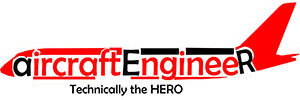EASA part 66 module 12
12.1 Theory of Flight — Rotary Wing Aerodynamics Terminology;
Effects of gyroscopic precession;
Torque reaction and directional control;
Dissymmetry of lift, Blade tip stall;
Translating tendency and its correction;
Coriolis effect and compensation;
Vortex ring state, power settling, overpitching;
Auto-rotation;
Ground effect.
12.2 Flight Control Systems
Cyclic control;
Collective control;
Swashplate;
Yaw control: Anti-Torque Control, Tail rotor, bleed air;
Main Rotor Head: Design and Operation features;
Blade Dampers: Function and construction;
Rotor Blades: Main and tail rotor blade construction and attachment;
Trim control, fixed and adjustable stabilisers;
System operation: manual, hydraulic, electrical and fly-bywire;
Artificial feel;
Balancing and Rigging.
12.3 Blade Tracking and Vibration Analysis
Rotor alignment;
Main and tail rotor tracking;
Static and dynamic balancing;
Vibration types, vibration reduction methods;
Ground resonance.
12.4 Transmissions
Gear boxes, main and tail rotors;
Clutches, free wheel units and rotor brake.
12.5 Airframe Structures
(a) Airworthiness requirements for structural strength;
Structural classification, primary, secondary and tertiary;
Fail safe, safe life, damage tolerance concepts;
Zonal and station identification systems;
Stress, strain, bending, compression, shear, torsion, tension, hoop stress, fatigue;
Drains and ventilation provisions;
System installation provisions;
Lightning strike protection provision.
(b) Construction methods of: stressed skin fuselage, formers, stringers, longerons, bulkheads, frames, doublers, struts, ties, beams, floor structures, reinforcement, methods of skinning and anti-corrosive protection.
Pylon, stabiliser and undercarriage attachments;
Seat installation;
Doors: construction, mechanisms, operation and safety devices;
Windows and windscreen construction;
Fuel storage;
Firewalls;
Engine mounts;
Structure assembly techniques: riveting, bolting, bonding;
Methods of surface protection, such as chromating, anodising, painting;
Surface cleaning.
Airframe symmetry: methods of alignment and symmetry checks.
12.6 Air Conditioning (ATA 21)
12.6.1 Air supply
Sources of air supply including engine bleed and ground cart;
12.6.2 Air Conditioning
Air conditioning systems;
Distribution systems;
Flow and temperature control systems;
Protection and warning devices.
12.7 Instruments/Avionic Systems
12.7.1 Instrument Systems (ATA 31)
Pitot static:altimeter, air speed indicator, vertical speed indicator;
Gyroscopic:artificial horizon, attitude director, direction indicator, horizontal situation indicator, turn and slip indicator, turn coordinator;
Compasses: direct reading, remote reading;
Vibration indicating systems — HUMS;
Other aircraft system indication.
12.7.2 Avionic Systems
Fundamentals of system layouts and operation of:
Auto Flight (ATA 22);
Communications (ATA 23);
Navigation Systems (ATA 34).
12.8 Electrical Power (ATA 24)
Batteries Installation and Operation;
DC power generation, AC power generation;
Emergency power generation;
Voltage regulation, Circuit protection.
Power distribution;
Inverters, transformers, rectifiers;
External/Ground power.
12.9 Equipment and Furnishings (ATA 25)
(a) Emergency equipment requirements;
Seats, harnesses and belts;
Lifting systems.
(b) Emergency flotation systems;
Cabin lay-out, cargo retention;
Equipment lay-out;
Cabin Furnishing Installation.
12.10 Fire Protection (ATA 26)
Fire and smoke detection and warning systems;
Fire extinguishing systems;
System tests.
12.11 Fuel Systems (ATA 28)
System lay-out;
Fuel tanks;
Supply systems;
Dumping, venting and draining;
Cross-feed and transfer;
Indications and warnings;
Refuelling and defuelling.
12.12 Hydraulic Power (ATA 29)
System lay-out;
Hydraulic fluids;
Hydraulic reservoirs and accumulators;
Pressure generation: electric, mechanical, pneumatic;
Emergency pressure generation;
Pressure Control;
Power distribution;
Indication and warning systems;
Interface with other systems.
12.13 Ice and Rain Protection (ATA 30)
Ice formation, classification and detection;
Anti-icing and de-icing systems: electrical, hot air and chemical;
Rain repellant and removal;
Probe and drain heating.
12.14 Landing Gear (ATA 32)
Construction, shock absorbing;
Extension and retraction systems: normal and emergency;
Indications and warning;
Wheels, tyres, brakes;
Steering;
Skids, floats.
12.15 Lights (ATA 33)
External: navigation, landing, taxiing, ice;
Internal: cabin, cockpit, cargo;
Emergency.
12.16 Pneumatic/Vacuum (ATA 36)
System lay-out;
Sources: engine, compressors, reservoirs, ground supply.;
Pressure control;
Distribution;
Indications and warnings;
Interfaces with other systems.
